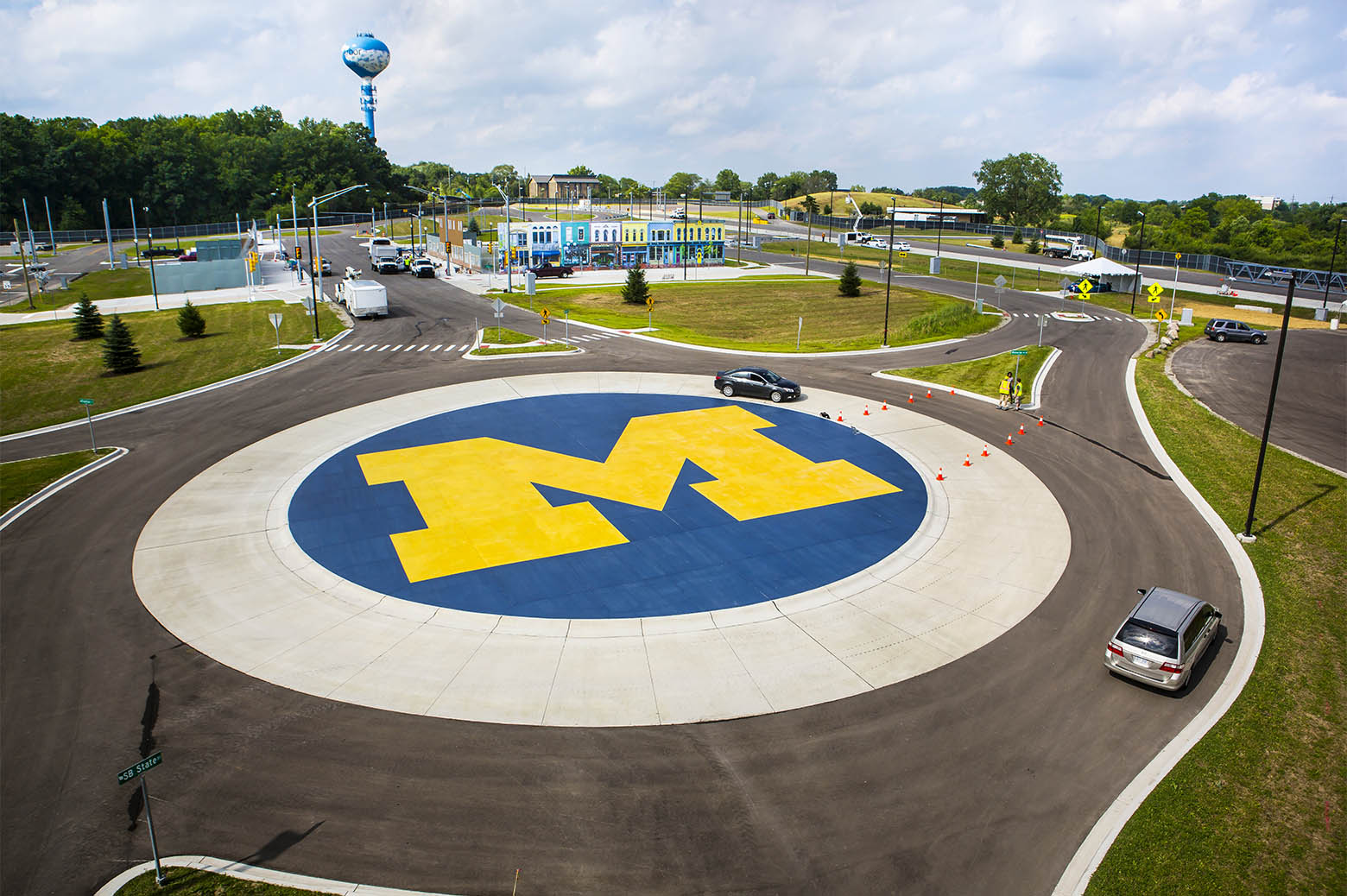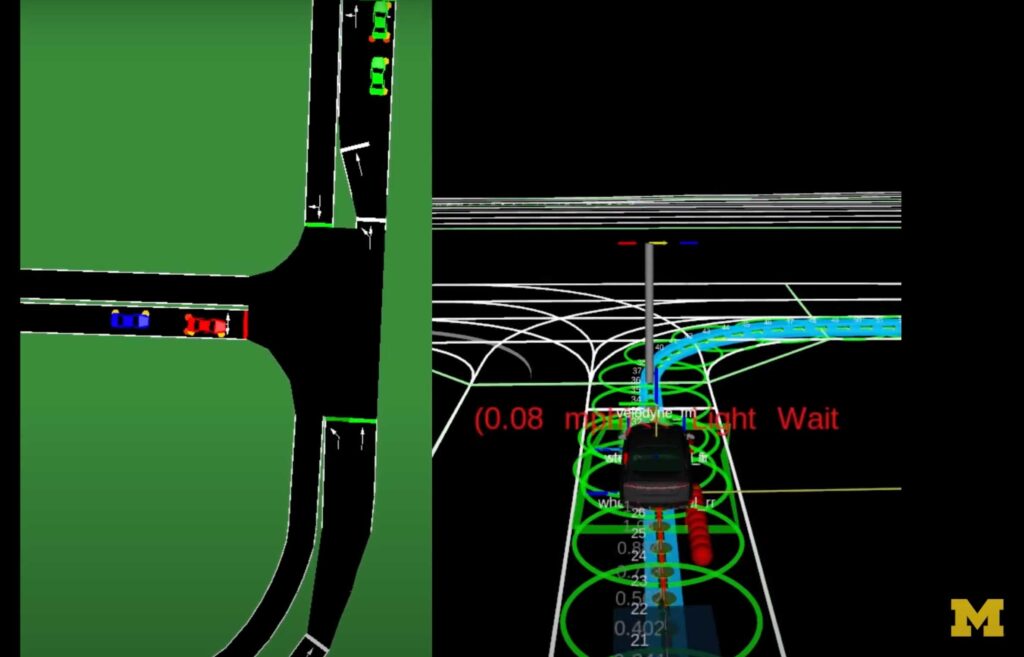
With AV Challenge, engineers can put their decision-making algorithms to the test
U-M’s Mcity will provide the first-of-its-kind city-scale virtual proving ground for competitors from industry and academia.

U-M’s Mcity will provide the first-of-its-kind city-scale virtual proving ground for competitors from industry and academia.
Experts
The University of Michigan has issued a challenge to the developers of autonomous vehicle (AV) technologies: show us what you’ve got.
The Mcity AV Challenge will pit researchers in academia and industry against each other, measuring the performance of their decision-making modules in a world-leading, realistic simulated environment.
“What’s unique about the Mcity AV Challenge is that, unlike traditional scenario-based AV testing, we will provide a city-scale traffic environment that introduces a series of challenges and obstacles over time to better replicate real driving conditions,” said Henry Liu, a U-M professor of civil and environmental engineering and director of both Mcity and the Center for Connected and Automated Transportation.
“The series of challenges will be based on crash and near-miss events data collected from the real world. Our goal is to encourage innovation, and to help accelerate the development and deployment of safe, reliable AV technology.”

Teams will develop their AV driving agent, called a module, within specified parameters provided by U-M and test it on a virtual proving ground with simulated traffic. Technology underpinning that environment was featured on the cover of Nature last year, as it offers a high-frequency exposure to real, rare, safety-critical traffic incidents. It is estimated to reduce the time and cost of module testing by a factor of one thousand.
Once the competition begins, contestant modules will be tested each week against a new virtual course with new traffic scenarios. They will be graded in five areas—safety, rule compliance, efficiency, comfort and the feasibility of vehicle dynamics—and ranked on a public leaderboard. Entrants can take each week’s performance evaluation and use it to improve their AV module for the following week’s test. The challenge will run from May 15 through August 1.
The team whose module earns the highest performance rating will be named the challenge winner on August 15. They will be invited to test their algorithms in Mcity’s mixed reality testing environment—16 acres of roads and traffic infrastructure that mimic urban and suburban infrastructure as well as simulated traffic. Those virtual vehicles introduce scenarios that occur rarely in on-the-road testing, but are crucial to training AV decision-making modules.
“We’ve created an immersive and high-fidelity simulation environment within Mcity for assessing the driving intelligence of AVs,” said Shengyin Shen, a research engineer at U-M’s Transportation Research Institute. “We streamline integration and simplify the submission process. Moreover, we harness cloud computing and services to automate test execution, update leaderboards and provide feedback to numerous participants.”
Registration is underway and will remain open until July 1. Teams that register early and begin testing in May have additional weeks to hone their module’s performance.
In recent years, Mcity has worked to make its testing facilities and capabilities available beyond Ann Arbor. In 2023, a $5.1 million grant from the National Science Foundation helped U-M upgrade its virtual reality software—creating Mcity 2.0—allowing researchers from around the U.S. to test their AV software at Mcity remotely. This challenge is supported by the Mcity 2.0 project.